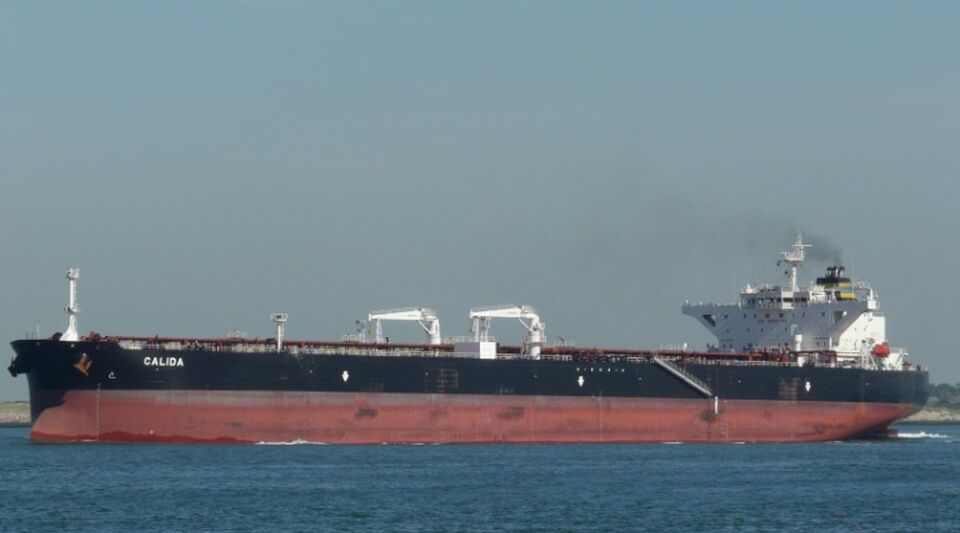As it happened with the Orange Spiritwhich brought American chicken last week, and with several tankers in recent months, the official Cuban press returned to skip the name and origin of an oil tanker that this Wednesday docked in the port of Matanzas to unload 40,000 tons of diesel. He also did not provide information on the origin of the fuel for which he paid $29 million.
The background suggests that the cargo comes from Russia and was “laundered” in Turkey to circumvent the embargo by NATO countries, in response to the invasion of Ukraine by Moscow troops. This measure does not apply to Cuba, but it does apply to certain countries such as the United States, where the ship made a stopover before reaching Matanzas.
Not a word about this in the Cuban Television report, which goes so far as to broadcast a report with images of another oil tanker, the Cheetah IIwhich entered that same port on April 27, coming from the Russian port of Tuapse, in the Black Sea, and made a stopover in Istanbul, but did not pass through the US. However, according to the vessel geolocation pages consulted by 14ymediohe Cheetah II It has been in Santiago de Cuba since May 2.
On the other hand, the official journalist Bernardo Espinosa, author of the report, illustrated the arrival of the oil tanker at the port of Matanzas this Thursday with the photographs of the Cheetah II that he used in a previous job, done on April 27.
According to the satellite monitoring of Vesselfinder and Marine Traffic, the only oil tanker that docked this Wednesday at the Matanzas Deepwater Dock was the ‘Calida’
According to the satellite monitoring of Vesselfinder and Marine Traffic, the only oil tanker that docked this Wednesday at the Matanzas Deepwater Dock was the warma ship which sails under the Maltese flag, coming from Istanbul, Turkey, after having stopped in the Netherlands and on April 30 in the port of Corpus Christi, in Texas, United States.
The Cuban authorities have made no mention of the warm, an oil tanker with a length of 249 meters and a beam of 44. In addition to two small tugboats with the Cuban flag, the only ship that is currently in the terminal from Matanzas, since April 30, is the Marianna VVa Liberian-flagged tanker.
According to Televisión Cubana, the ship docked at the Matanzas Deepwater Dock and, after “certifying the quality of the product”, unloading began to another ship, an operation that is expected to be completed in 48 hours. “This allows us to quickly reach other ports that are also in need of fuel,” said Lidia Rodríguez, director of the Unión Cuba Petróleo Marketing Company (Cupet).
“The cargo of this ship will not mean an increase in the volumes to be sold,” warned the officials interviewed by national television, who described the cargo as “insufficient”, although it helped to “not reach zero” in terms of electricity generation. According to officials, 20,000 tons of the discharged diesel will be used for power generation, and the same amount for “basic services.”
“The cargo of this ship will not mean increases in the volumes to be sold,” warned the officials interviewed by national television.
“We know the conditions that exist with the fuel,” said Ower Luis Grau, head of Areas at the Matanzas pier, who added that “most of the fuel that enters this country” is unloaded through that terminal and that he hopes that “it will arrive quickly” to the other provinces.
Televisión Cubana added that the island is eager to “receive new imports”, some already “in business phases” and others en route to the largest of the Antilles.” Before the end of May, the officials assured, other fuel shipments will arrive .
On April 27, when the Cheetah IIthe authorities were also hermetic with the information about the boat. At that time, the official press guaranteed that diesel would also be used in electricity generation and in “sectors of the economy and the social area.”
The shipment did not mean an improvement in the sale of hydrocarbons to private drivers on the Island either. The Minister of Energy and Mines, Vicente de la O Levy, insisted on the idea of ”not touching zero with fuels”, but the situation remains in the most complete precariousness.
What the Cuban government does not report is where the oil comes from and through what negotiations it enters Cuba. The agency Reuters recently revealed that Mexico increased its crude oil exports to the island, and that has not meant relief for the fuel crisis in the country either.
________________________
Collaborate with our work:
The team of 14ymedio He is committed to doing serious journalism that reflects the reality of deep Cuba. Thank you for accompanying us on this long road. We invite you to continue supporting us, but this time becoming a member of our newspaper. Together we can continue transforming journalism in Cuba.








